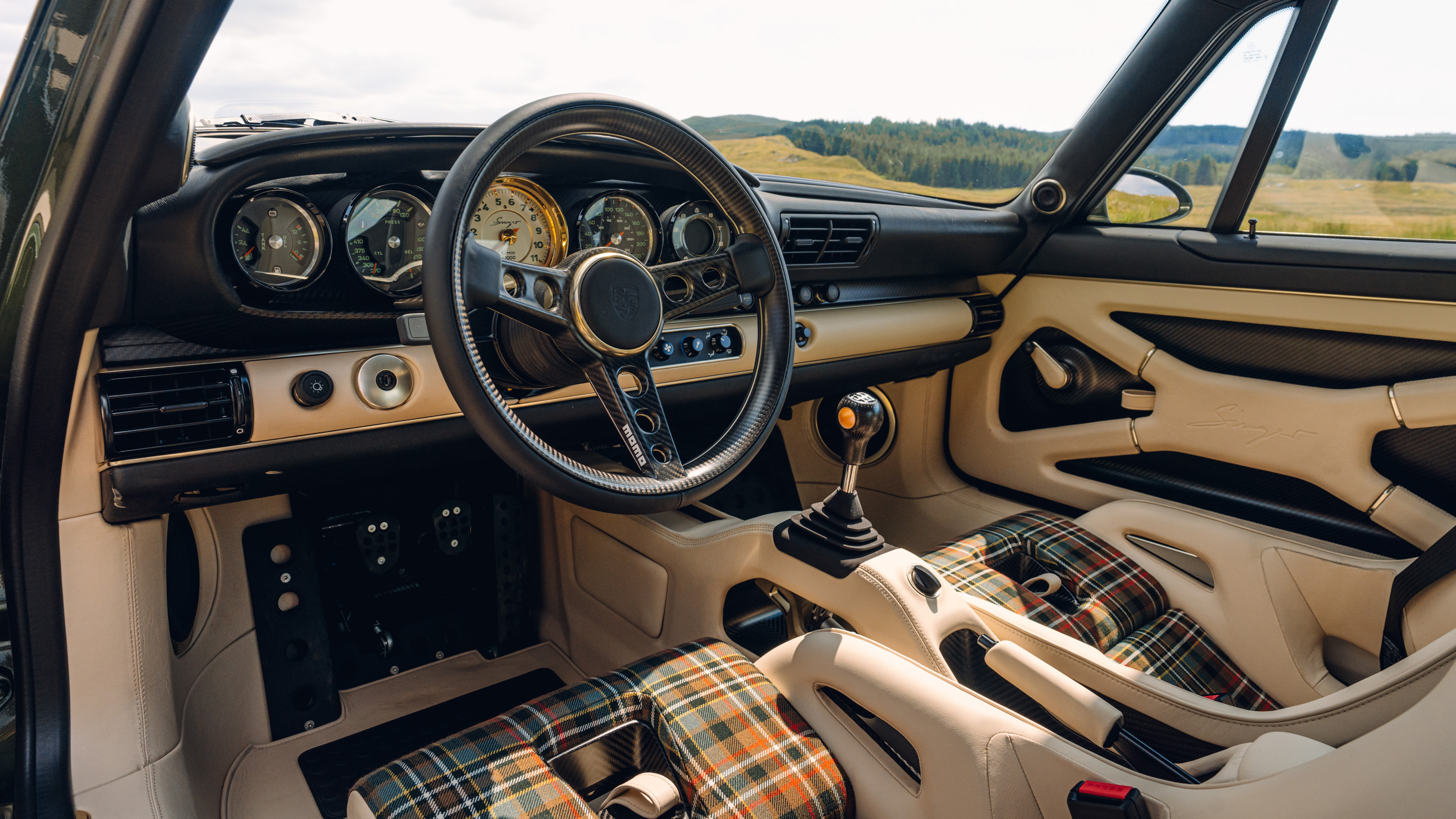
Interior
What is it like on the inside?
It is a thoroughly usable car. There’s storage under the bonnet (just be careful about fuel spillage when filling up the thoroughly reasonable 63-litre tank) and masses of space inside – although the one piece seats make it awkward to get stuff in and out of the back deck.
But really it’s about the view forward, a view that encapsulates not just whatever scenery is the other side of the upright windscreen, but the dials, the steering wheel, the perfection of Singer’s attention to detail. The central rev counter is jewel-like, a fitting tribute to the engine whose behaviour it’s reflecting. Personally I find the fonts on the minor instruments a bit heavily done, but that’s literally it, a sole cabin nitpick. OK, I suppose it would be nice if the steering adjusted, but Singer can add a spacer if you prefer it more in your chest.
But beyond all this, there’s an impression you get when you open the door that’s unlike anything else. The closest firm I can liken it to is Pagani – there’s a similar sense of artistry and engineering being combined, of everything being obsessively considered and worked on, but here it’s the sympathetically enhanced retro touches that dominate. It makes you gasp when you open a door, the realisation that not being able to look at the bodywork while you drive is actually not the issue you thought it would be, because the cabin is every bit as absorbing and special.
The fit and finish is stunning, the materials, the execution, the paintwork. If you had the money for one of these, you’d look at it, realise the work that goes into it and not question the price.
Featured

Trending this week
- Car Review
BMW iX3






